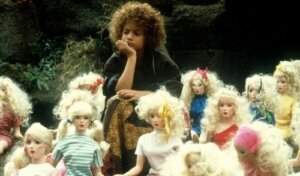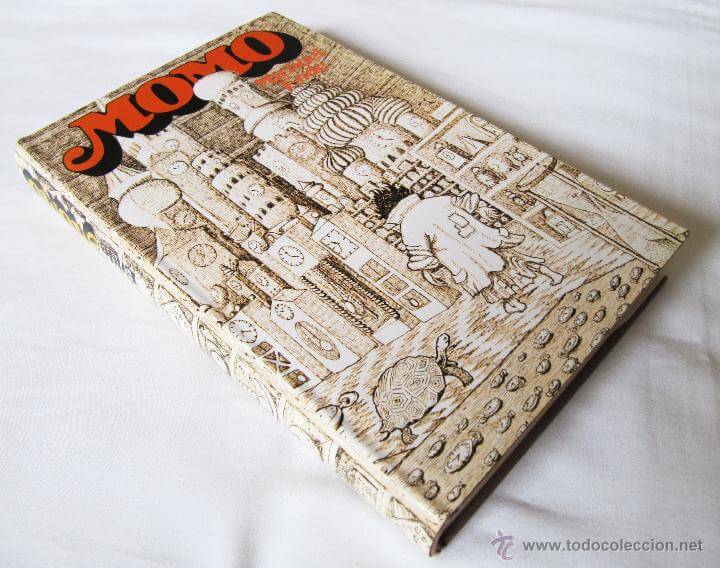8 Lessons From Momo for Teenagers

Momo is a wonderful novel by Michael Ende that’s dedicated to children. In it, he shows great imagination and an enormous pedagogical capacity. For this reason, the lessons from Momo for teenagers are of great value.
What’s very attractive to readers, regardless of the generation to which they belong, is that the lessons are conveyed in a creative, interesting, and fun way through the story of a little girl named Momo.
The book could well be categorized as a thought-provoking work. At the same time, it can also be cataloged as a text with a strong criticism of society.
The novel is basically about a little girl who, suddenly, has to face some strange men. They’re dressed in gray and carry hats and briefcases. Their mission is to convince people to invest their time in a kind of timebank.

Time is life
Momo makes a strong criticism of how time is wasted. In contemporary societies, time has become a commodity to be bought and sold.
This book shows how time can become just another commodity and why we need to not let money determine how we spend it.
In other words, the book urges readers to go further and spend time on what fulfills them and brings them non-material benefits.
Knowing how to listen, one of the lessons from Momo
Momo’s lessons are given through examples. In the case of the importance of knowing how to listen, the story presents a character who’s truly mastered this skill, as she listens to people without interrupting them and allows her interlocutors to express themselves freely.
A good listener isn’t in a hurry and seeks, above all, to support others by listening. In a world where everyone wants to talk, but few want to listen, Momo is a great example.
Solidarity is an essential value
Momo is a girl who lives in a community with scarce resources. That’s why everyone helps each other and shares what they have with others.
Momo herself is the first beneficiary of this help: she has no home, so the community provides it. She has no goods and the others intervene for her to acquire them. She, in turn, becomes the guiding light for others.
Creativity and imagination
One of Momo’s most interesting teachings is the value of imagination. With imagination and creativity, the ordinary can become something special. You don’t need things to feel good and have fun. What makes the difference is the ability to imagine.
It’s a lesson that many children and young people today should learn.
Nowadays, unfortunately, many people think that fun is in material things and not in experiences. We believe that by owning an object, we’re guaranteed to have fun. Momo shows that this isn’t the case.
Utilitarianism isn’t the best option
Many of the lessons from Momo are aimed at rescuing what’s most genuine in human beings. Much of it is found outside the circuits of what’s “useful”.
Not everything in life should be done for profit or utility, there are free acts such as imagining and laughing. Not everything has to be focused on the monetary benefit.

Satisfaction isn’t in consumption
The whole gear of today’s society is focused on making consumption possible. The idea has spread that the greatest satisfaction is in making purchases and in having money to do so.
That’s why people have lost interest in activities that don’t revolve around that logic. However, Momo shows that this is actually a path to unhappiness.
Happiness is in the little things
Every day is full of small details that often go unnoticed. This is because people focus only on what they call “important matters”.
In the end, nothing satisfies us. A dynamic builds up in which we feel the need to have more and more. At the same time, one loses the ability to see the magic of the little things, and therein lies the joy.
Deceiving damages
On several occasions, Momo refers to the damage caused by lies. It says in the novel that, in her opinion, all the misfortunes of the world were born of the many lies, those told on purpose, but also the unintentional ones, caused by haste or inaccuracy. She teaches that the most negative effect of lying is the destruction of trust.
All cited sources were thoroughly reviewed by our team to ensure their quality, reliability, currency, and validity. The bibliography of this article was considered reliable and of academic or scientific accuracy.
- Quinteros, G. (2001). El arte, la imaginación y el juego: fronteras indómitas y espacios mediadores de lo esencialmente humano. ponencia presentada para el Programa de formación en derechos y posibilidades de la infancia, UAM, México.
- Torres Martínez, A. (2018). El Mundo de Momo. https://repositorioinstitucional.ceu.es/handle/10637/11505
- Yescas, A. A. S. (2008). Fomento de valores en niños de nivel preescolar por medio de Momo de Michael Ende (Doctoral dissertation, UPN-Ajusco).
This text is provided for informational purposes only and does not replace consultation with a professional. If in doubt, consult your specialist.








